Talking J.Press
A chat Robert Squillaro, Senior Vice President.
The first time I visited New York City, airport security pulled me aside. I was searched and asked a series of questions: What is the purpose of your visit, and what are you doing while you’re here? My answer should have simply been, "J. Press."
I've been fascinated by the brand ever since I first heard the term “Ivy style.” No one else can claim the same level of heritage, and no one does it quite like them.
Robert Squillaro is the Senior Vice President and Chief Merchandising Officer of J. Press.
As a key figure in the brand, it was my pleasure to sit down for an extensive conversation about J. Press—and perhaps a little about the New York Jets, too.
Tom Hoy: J. Press has been a key figure in defining Ivy League style for over a century. How do you balance maintaining the brand’s heritage while also appealing to modern tastes?
Robert Squillaro: As time passes, certain items that were once popular in Ivy League style have become irrelevant and are no longer part of our assortment. However, most of the items that remain popular today have been slightly modified to appeal to current tastes—lighter fabrics, softer garment construction, fit details, etc.
TH: The three-button sack suit and Oxford cloth button-down shirt have become classic J. Press staples. How have these timeless pieces been maintained over the years, and what aspects of their design have helped them remain relevant?
RS: Both have remained relevant due to their understated styling and comfortable fit and construction. They exude classic American style.
TH: J. Press started on the Yale University campus in 1902. How does the brand’s connection to Ivy League culture continue to influence its identity today?
RS: Unfortunately, Ivy League fashion and Ivy League schools no longer go hand in hand. The clothing worn by most students on Ivy League campuses bears no resemblance to what is known as Ivy League style. Ivy League style has always been associated with educated people who dress with quiet elegance. Our products exemplify this look, which keeps us connected to Ivy League culture. Additionally, having a flagship store on the Yale campus in New Haven strengthens that connection.
TH: The Shaggy Dog sweater is one of J. Press’s most recognized items. What can you tell us about its origin and how it has remained such a beloved piece in the brand’s lineup?
RS: Our Shaggy Dog sweater has been around for almost 80 years. It was first developed by Irving Press to differentiate our Shetland sweater from our competition. The brushing gives the sweater an interesting hand and appearance, creating a lofty and light feel. We still make them in Scotland using authentic Shetland wool and offer a wide range of colours, including many beautiful compound mixture shades.
The Shaggy Dog sweater has become a staple of Ivy League style, representing not just a piece of clothing but a tradition in American menswear.
Originally developed nearly 80 years ago by Irving Press, the Shaggy Dog sweater was designed to set J. Press apart from its competitors. Its distinctive brushing technique gives the sweater a unique texture that feels soft and lofty, making it a comfortable choice for any occasion.
Crafted in Scotland from authentic Shetland wool, the Shaggy Dog is available in a variety of colours, including beautiful compound mixture shades. This versatility allows it to be styled effortlessly, whether worn over a collared shirt for a preppy look or paired with jeans for a more casual outfit. The timeless design, combined with its high-quality craftsmanship, ensures that the Shaggy Dog sweater remains a beloved choice for those who appreciate classic American style.

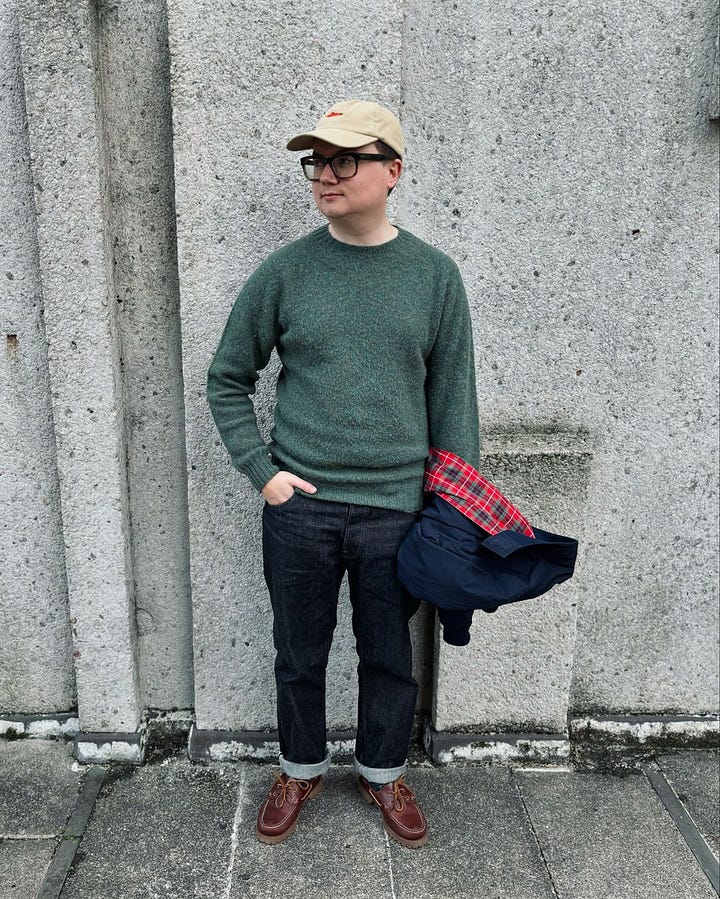
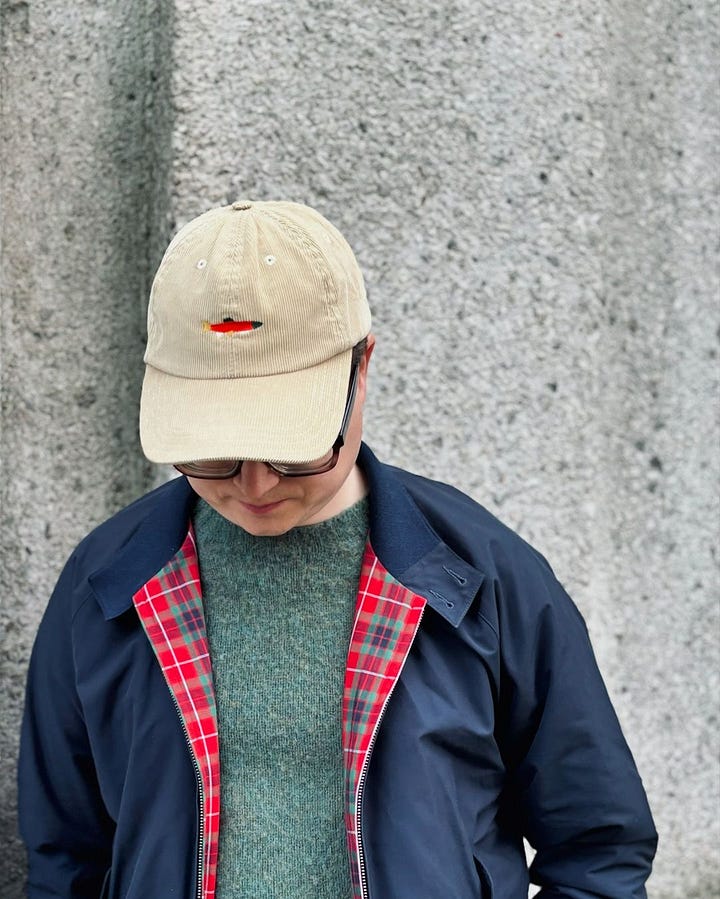
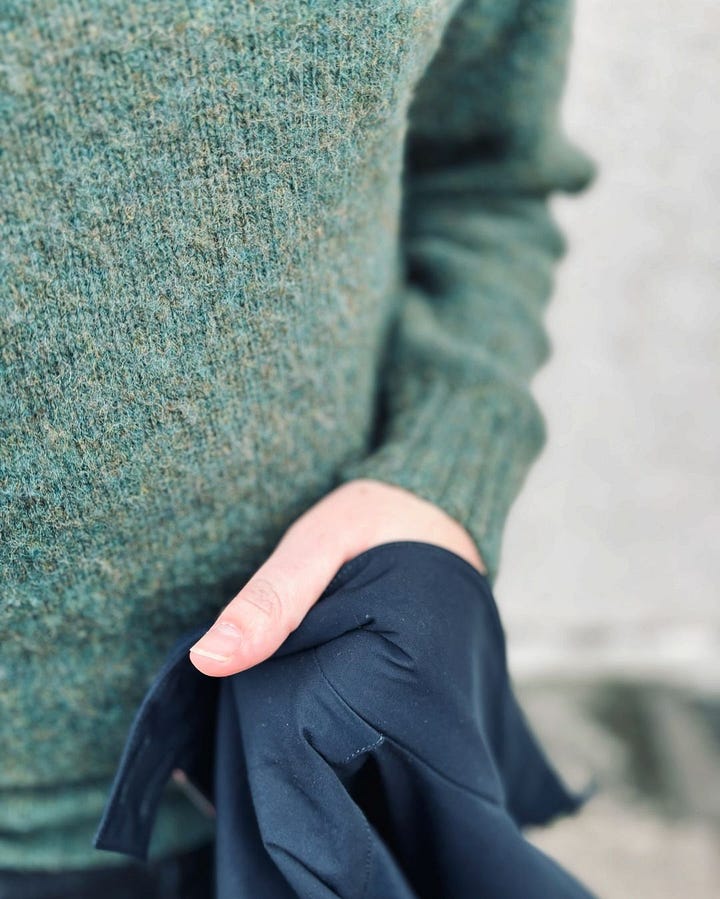
As a testament to its enduring appeal, many loyal customers return to J. Press specifically for the Shaggy Dog, eager to add new colours and styles to their collections. It's more than just a sweater—it's a piece of heritage that embodies the essence of Ivy League fashion.

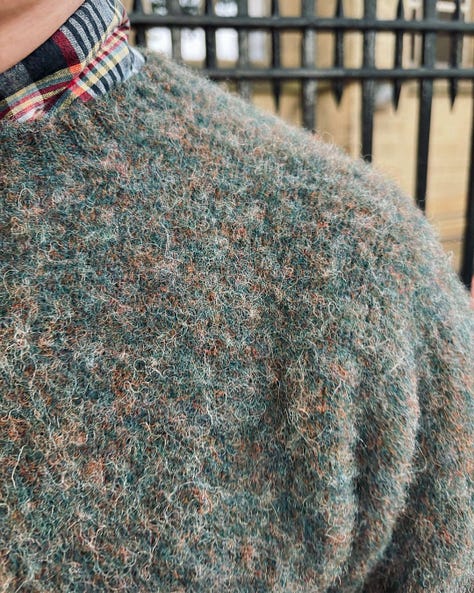
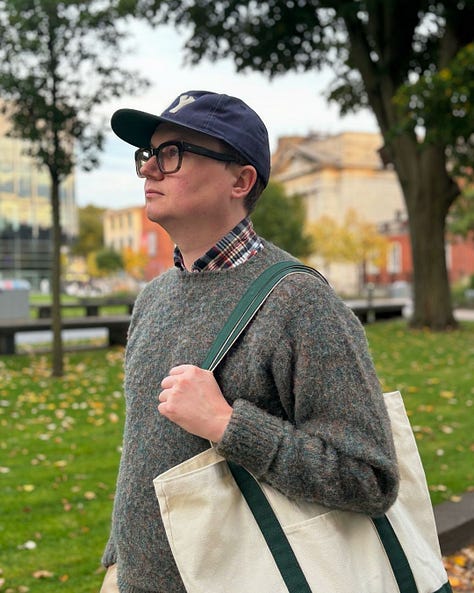
Trim Fit (Green Mix)
The trim fit in green feels modern and tailored, making it easy to layer under a blazer for a smarter look. This is where I think J. Press really stands out above others. The sweater has a great weight to it. It feels substantial yet comfortable enough for all-day wear, and it holds its shape well over time.
This is my first experience with a J. Press Shaggy Dog, and I’m really impressed. The woollen-spun yarn is warm and soft, showcasing an intricate technique that blends multiple colours together. This craftsmanship not only enhances the texture but also adds depth and visual interest.
The green mix in the trim fit offers a sharp, contemporary look, adding a modern twist to the classic Shaggy Dog aesthetic.
Classic Fit (Blue/Brown)
In contrast, the classic fit in blue/brown has a roomier silhouette that leans towards the traditional Shaggy Dog style, offering an incredibly comfortable, relaxed feel.
Similar to the trim fit, this sweater also feels substantial and comfortable for all-day wear, maintaining its shape over time. The folded-back cuffs are a nice touch, allowing you to adjust the length to your preference.
My experience with the classic fit confirms the same high-quality craftsmanship. The woollen-spun yarn is equally warm and soft, setting it apart from other brands that tend to wear poorly.
The blue/brown of the classic fit captures that timeless appeal of a traditional Shaggy Dog. I particularly enjoy the fleck in the classic fit; it showcases the craftsmanship and allows you to see how different colours are spun together, adding depth and texture.
Why wear a coat when you have a Shaggy Dog?
TH: J. Press is renowned for its craftsmanship and focus on quality tailoring. Can you walk us through what makes J. Press garments stand out in terms of construction and fit?
RS: All of our classic tailored clothing is made in factories in the US and Canada using lightweight components that create a natural shoulder and comfortable fit. Our main jacket model is still a three-roll-two, undarted, natural shoulder with a centre hook vent. We only use fabrics from top mills that tailor well and hold their shape.
TH: How has the customer base of J. Press evolved over time? Are there noticeable generational differences in how customers engage with the brand and its offerings?
RS: Since 1902, the customer base began with students at Yale and expanded to other markets as we opened stores in Cambridge, Princeton, and New York City. Over time, it evolved from primarily college students to college graduates entering the business world. Consequently, we now have stores in Midtown Manhattan and Washington, D.C., as many students went on to careers in these cities. Currently, our customer base includes anyone who appreciates classic American Ivy style. More recently, we've noticed an increase in younger customers, both with our Pennant label and our regular heritage brand.
TH: The J. Press catalogue includes classic pieces synonymous with Ivy style, but are there any lesser-known products or lines that you feel deserve more attention?
RS: I believe our sack jackets, whether suits or sport coats, deserve more attention. We also have a phenomenal selection of tweed sport jackets and corduroy trousers in the fall. We offer 18 colours of English corduroy made in the US. Additionally, our extensive sweater selection and classic summer-weight fabrics like madras, seersucker, and poplin deserve recognition.
TH: The first item I purchased from J. Press was a Yale sweater. What I loved about it was the fit—it was exactly what I had been searching for: the high waistband, the trim fit body, and the cuffs. Is this the kind of feedback you often receive? Do you think this is why people return to J. Press, seeking classic items they can't find elsewhere?
RS: Yes, I think our classic items, made in countries known for their quality, contribute to customer loyalty. Fit is subjective; what suits one person may not suit another. However, the appreciation for our quality and styling often brings customers back. Many new customers say, "I love this. I didn’t know anyone made it like this anymore."
I wouldn't discount our Oxford cloth button-down shirts either. While Brooks Brothers originated them, we still make ours in a classic fit, without any fusible or interlining in the collar, cuffs, or front pocket. It’s a comfortable, soft front placket made from classic Oxford fabric, all produced in US workrooms. I believe this quality shouldn’t be overlooked, and we offer it at a fair price.
TH: People trust you for that, don't they? In the past, I started my career in high street retail, where sales dominated much of the year. When items were full price, people weren't interested; they waited for discounts. Customer trust was diminished.
RS: Yes, I think people have become savvy. Thirty or forty years ago, sales were still new. Now, people understand it's often a game, similar to outlet stores. Initially, outlets sold genuine products cleared from retail stores, but brands began to produce items specifically for their outlets. Most customers now realise that outlet products aren’t the same as what’s sold at retail.
TH: In an era where fast fashion dominates, how has J. Press maintained its dedication to quality craftsmanship, and what challenges do you face in this environment?
RS: We've maintained our dedication by adhering to the principles we were founded on. However, it does get tough because both the UK and the US have become less of a manufacturing economy and more of a technology and service economy. Finding factories that produce items the traditional way is increasingly challenging.
I wouldn’t say we lead the fashion curve regarding style trends or fads. We tend to sit those out. However, we offer something that is always appropriate. You’ll never wear something from J. Press and look back in 20 years and ask yourself, "What was I thinking?"
TH: With such a strong legacy in American menswear, what future plans or new directions do you see J. Press taking to remain a leader in the industry?
RS: I don’t foresee a change in direction for our heritage brand. We will continue to focus on producing the best products and providing the best value. The new direction would be to further develop our Pennant label, which aims to compete in the younger market with slightly more affordable options. Aside from that, I don’t see any major changes in style and product. Hopefully, down the road, we might be able to add a store or two.
J. Press remains a cornerstone of American Ivy League style, blending heritage with contemporary sensibilities. The brand’s commitment to quality craftsmanship and timeless design, exemplified by pieces like the iconic Shaggy Dog sweater, ensures it continues to resonate with both long-time fans and a new generation of customers.
I would like to extend my thanks to Robert Squillaro for his insights and to J. Press for their dedication to preserving the essence of Ivy style.
Thanks for reading,
Tom



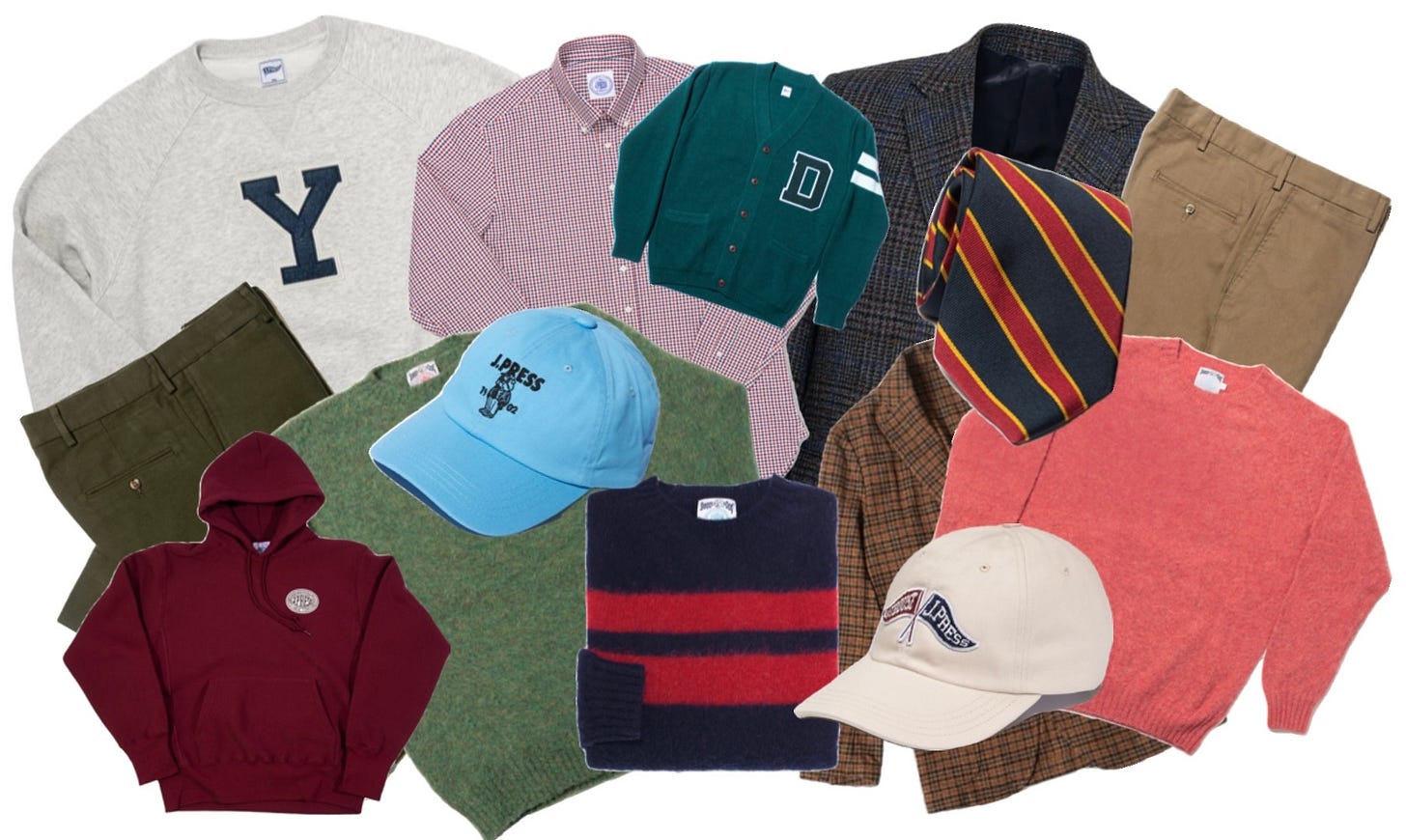

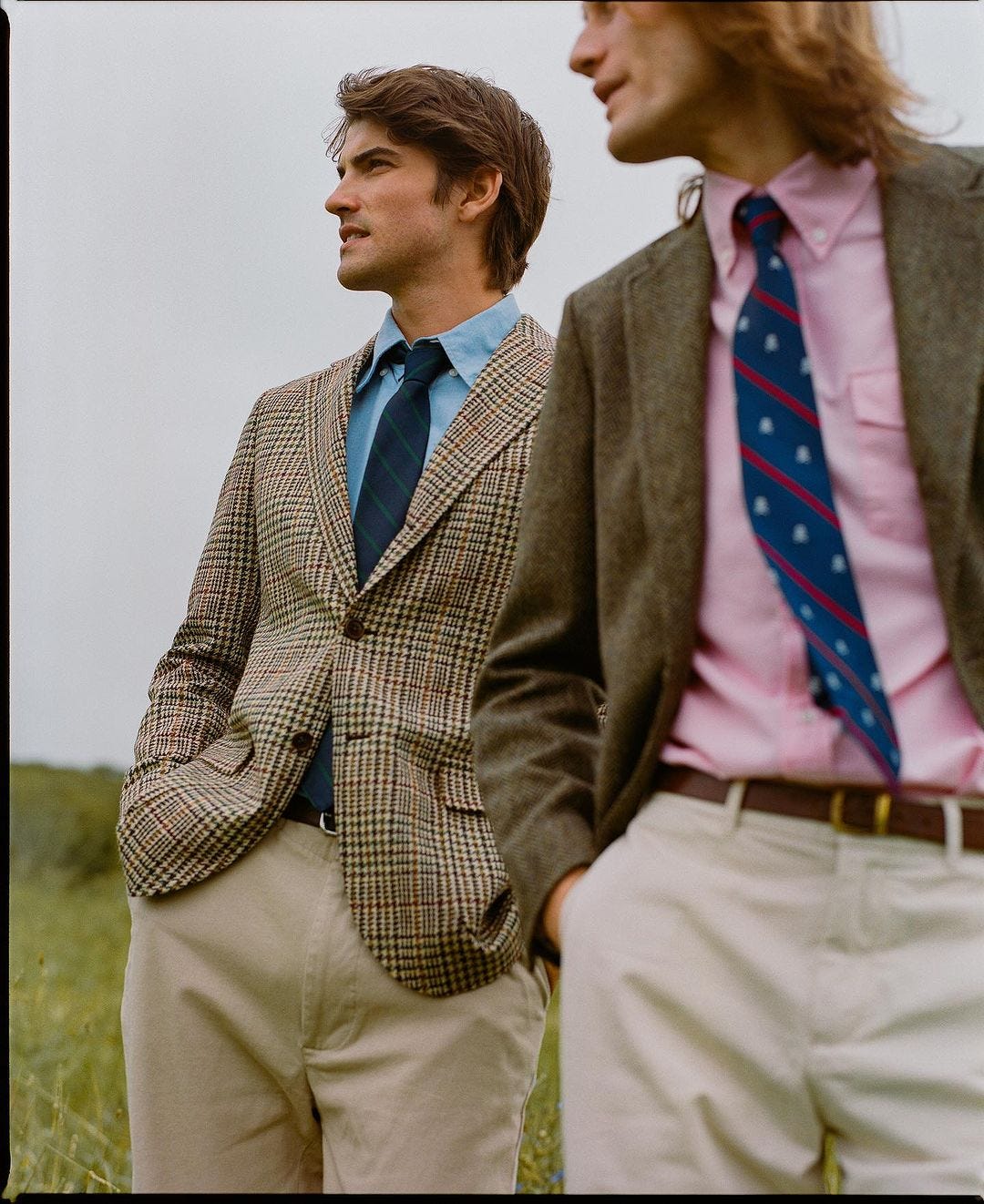
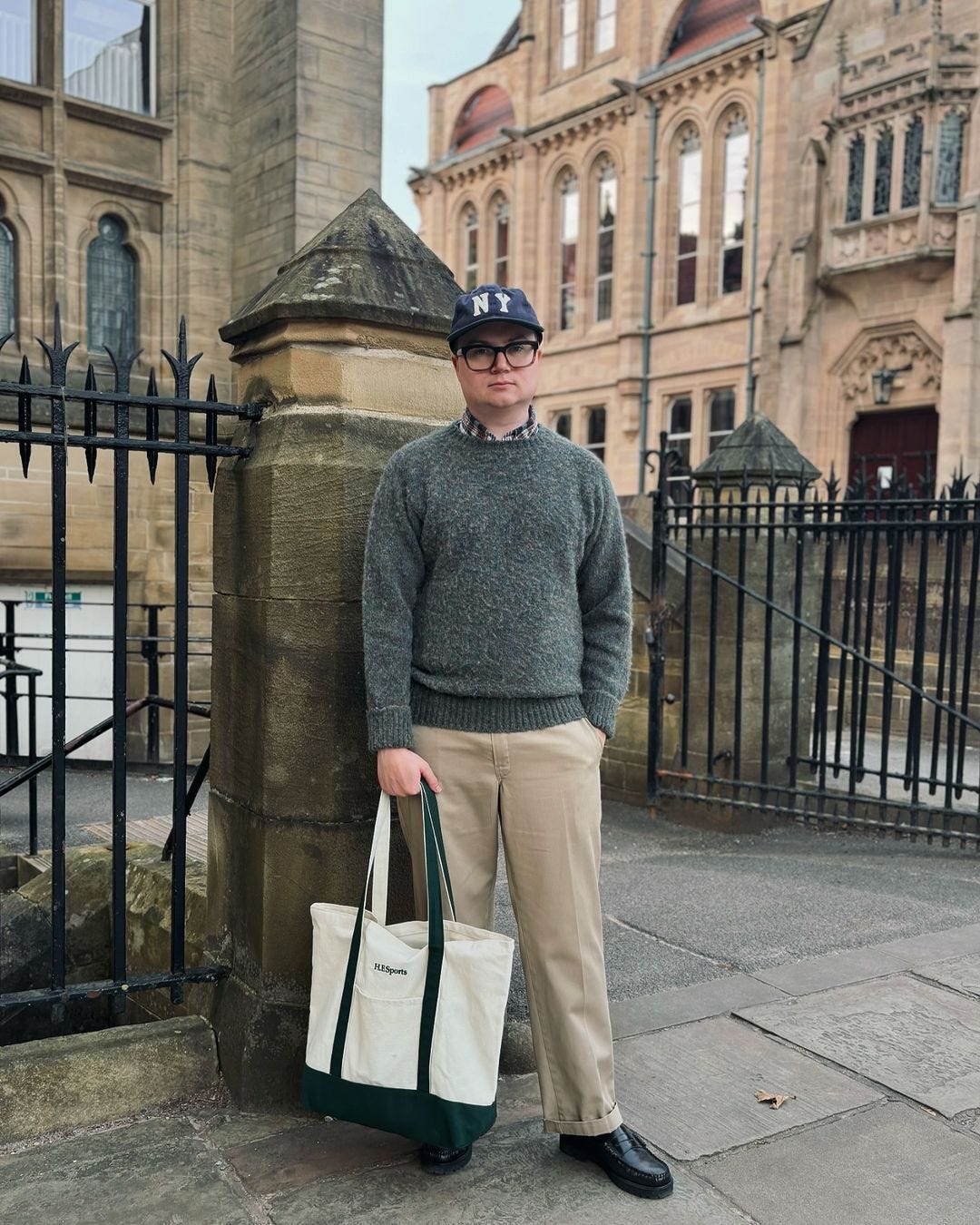


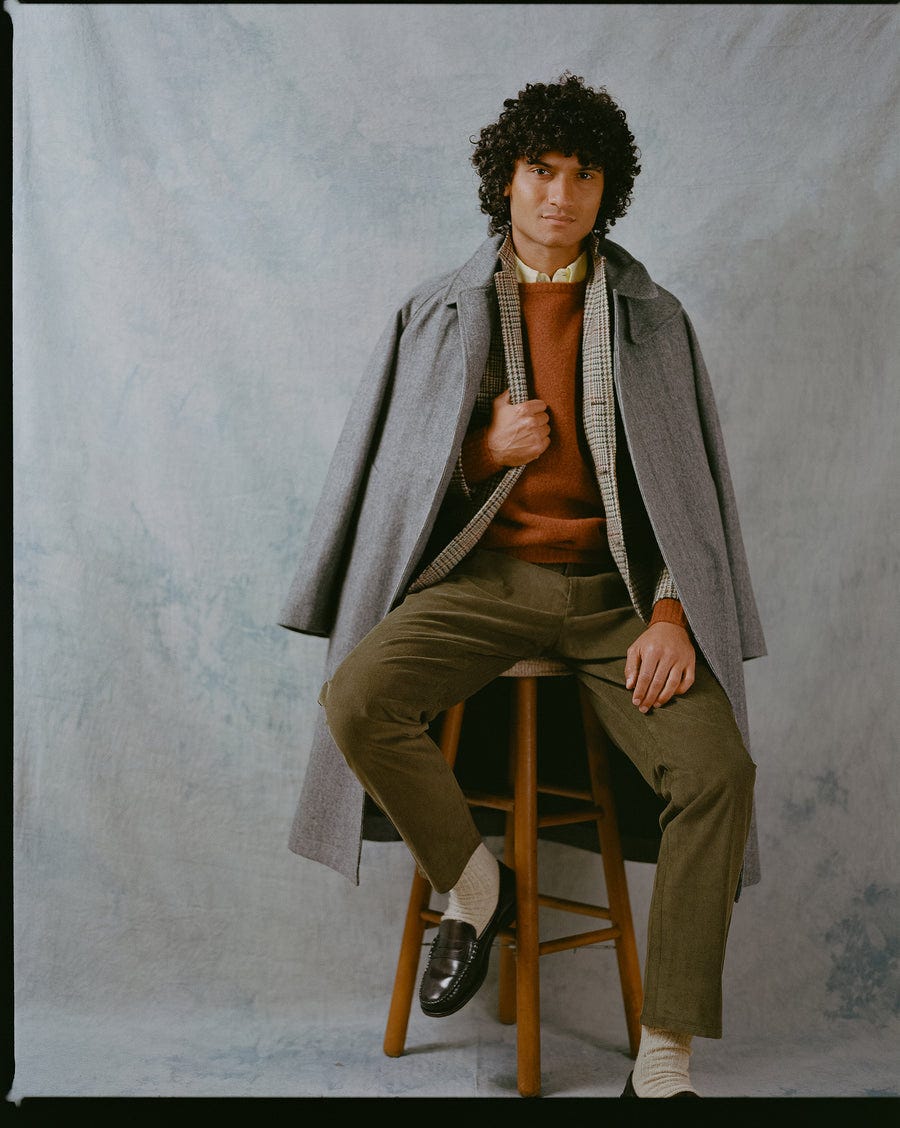

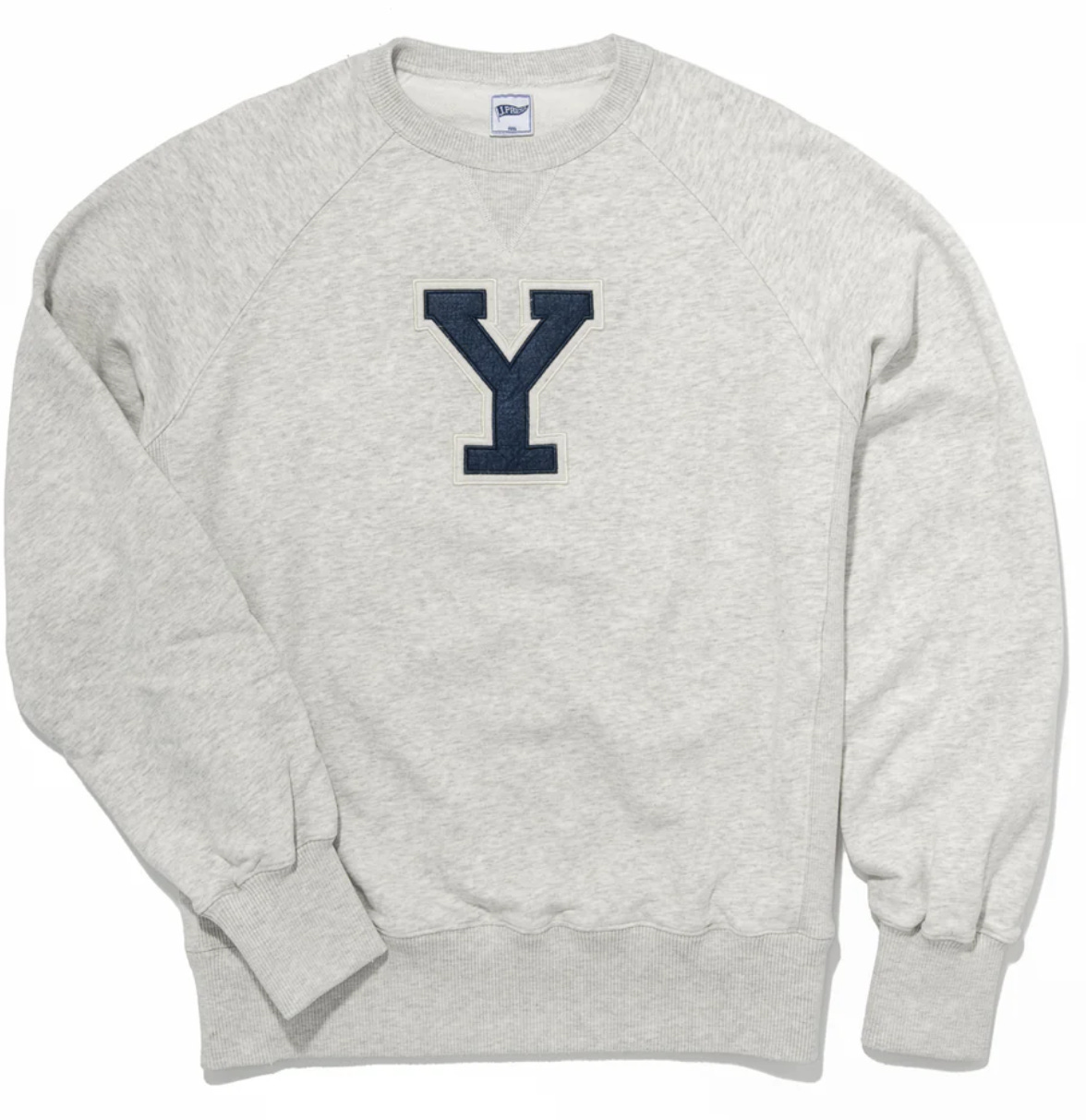
Cool read Tom, always great, inspiring content!
Just purchased my first J Press item…a brown herringbone tweed sport coat. Love it so much. Maybe a shaggy dog will be next!